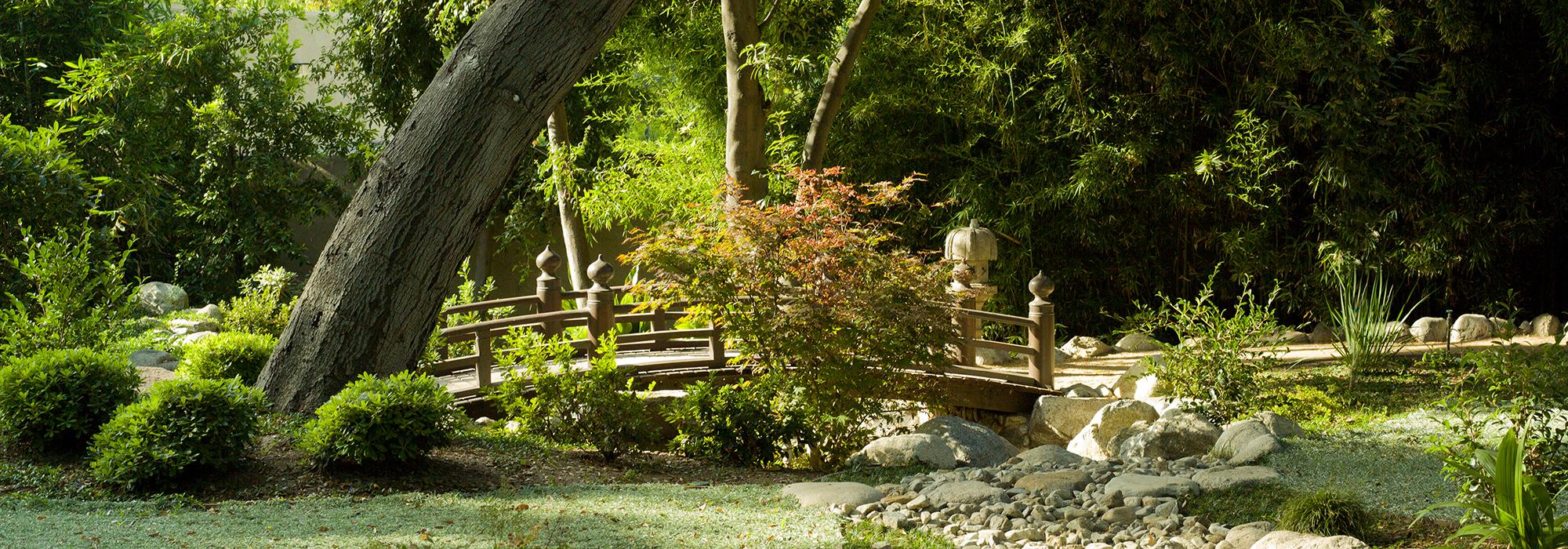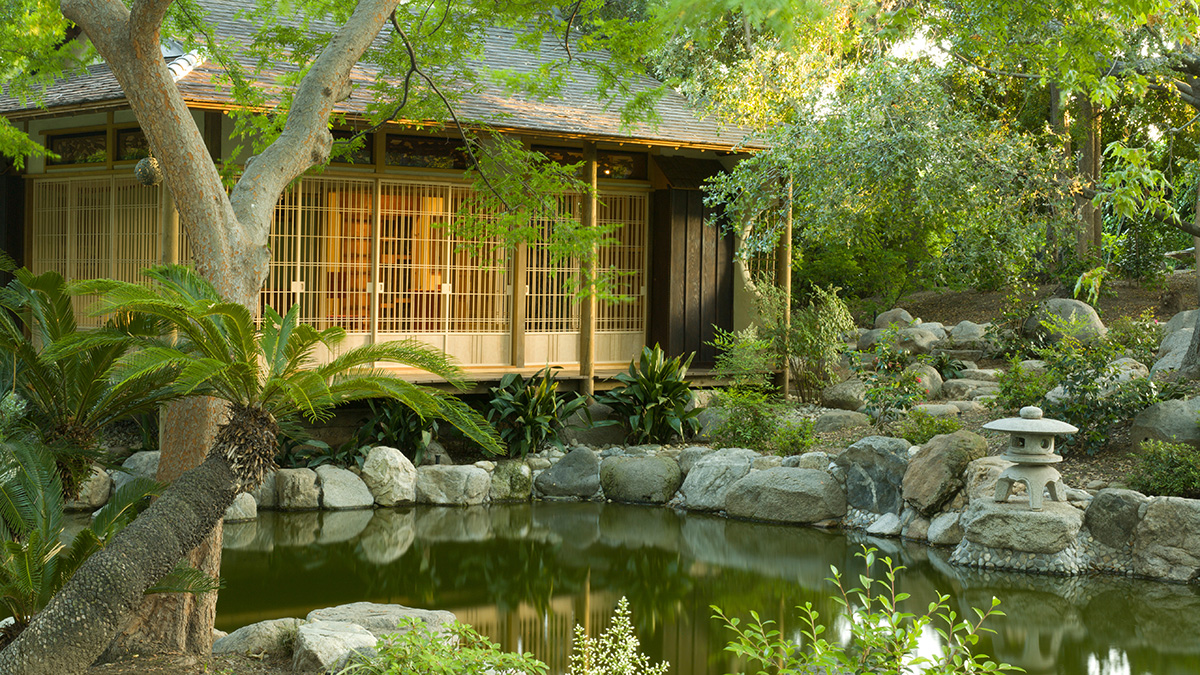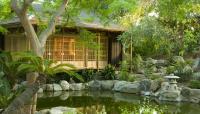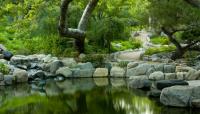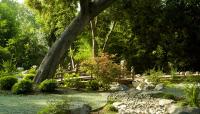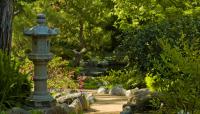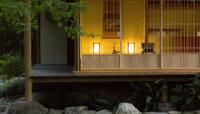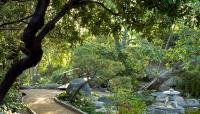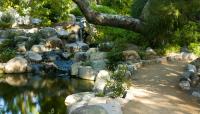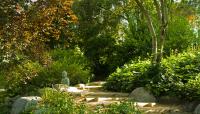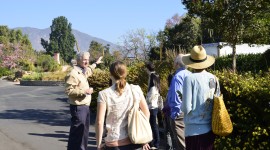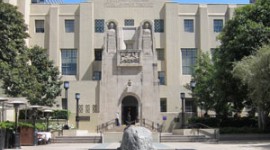Landscape Information
In 1935, after visiting Japan, Charles and Ellamae Storrier Stearns hired Kinzuchi Fujii to convert the tennis court area on their six-acre estate into a Japanese-style stroll garden from the Edo period. Built on a scale unprecedented in the U.S., the 1.5-acre garden is Fujii’s most significant work.
Secluded from the street by a six-foot-high wall capped with black leaded tiles, the garden is accessed through an entrance gate flanked by Foo dog statues and pittosporum, podocarpus, and acanthus. At the center of the garden are two irregularly-shaped, interconnecting ponds edged with beach pebbles, with a 200 foot-long retaining wall that wraps the north and east sides of the ponds. The wall buttresses a 25-foot-high hill formed from the ponds’ excavated soil. Over 2,000 granite boulders were brought in to create a cascading waterfall with a twelve-foot drop. A footpath winds around both ponds and over a serpentine gully which is traversed by four granite and wood footbridges. The garden was planted with black pines, Japanese maples, Chinese elms, camellias, azaleas, rhododendrons, and ferns and contained five Japanese lanterns, a rustic, redwood-log shelter and a teahouse on the southern edge of the lower pond.
The estate was subdivided in 1950 and fell into decline until 2005, when landscape architect Takeo Uesugi restored the garden according to Fujii’s original plans. Considered one of the best chisen kaiyu shiki teien (pond strolling garden) in the country created prior to World War II, it was listed in the National Register of Historic Places in 2005.



